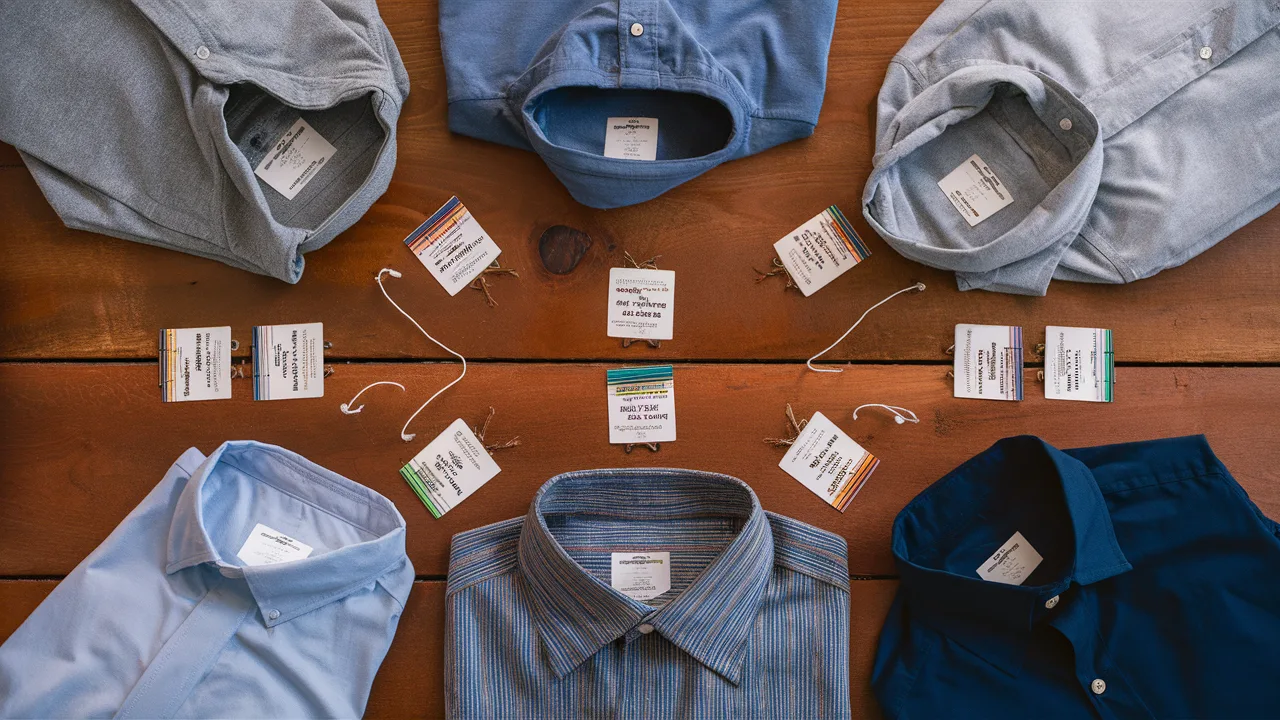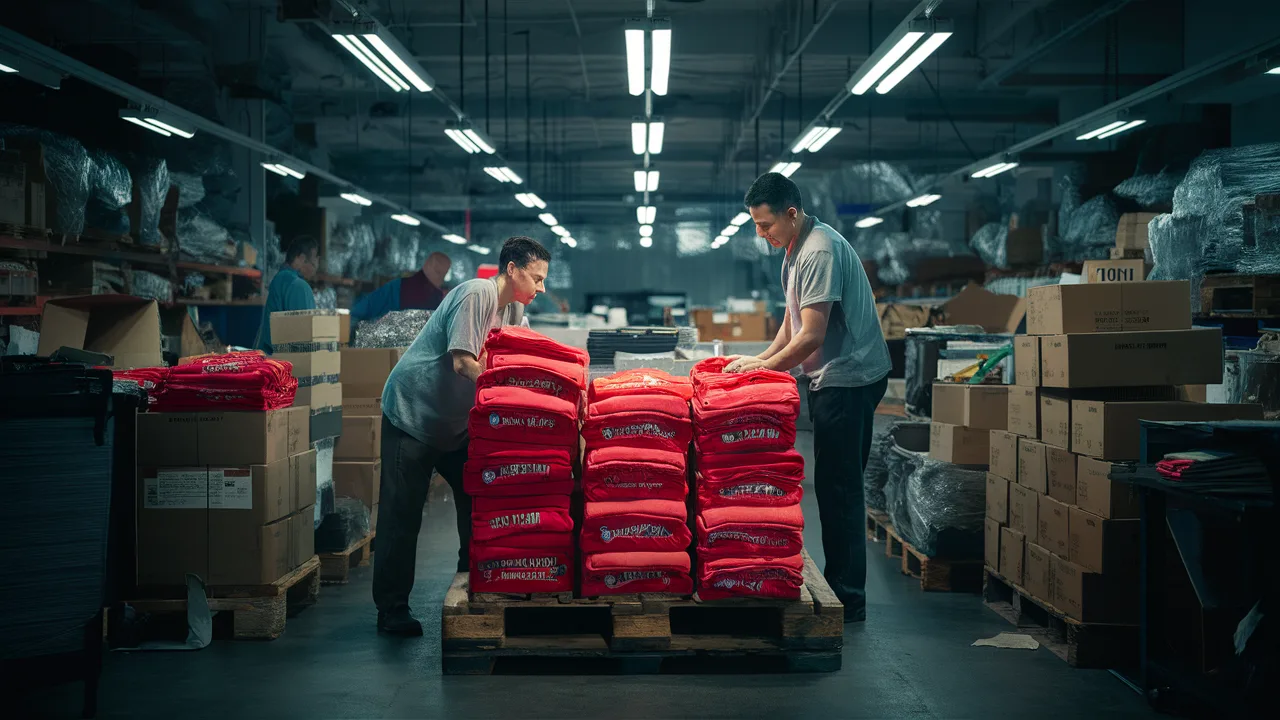How can I reduce turnaround time for custom shirt orders?
The fastest way to reduce turnaround time for custom shirt orders is by selecting in-stock materials, simplifying your design complexity, maintaining clear printing company communication, and utilizing expedited shipping when necessary. Strategic planning for bulk orders prevents costly delays and ensures on-time delivery.
- Choose stock materials: Avoid special-order fabrics that extend lead times.
- Simplify design complexity: Fewer colors mean faster production cycles.
- Use expedited shipping: Control delivery timelines when deadlines are critical.
- Communicate promptly: Clear specifications prevent revision delays.
- Plan bulk orders strategically: Advance planning eliminates rush fees and backorders.
Introduction: Understanding Turnaround Time for Custom Shirt Orders
You’re racing against the clock, waiting for custom shirts to arrive before your company event or fundraiser deadline. This scenario plays out daily for small businesses, non-profits, schools, and teams where delays aren’t just inconvenient—they’re budget-busting disasters.
Turnaround time represents the critical window between placing your custom shirt orders and receiving finished products. Understanding this process gives you the power to reduce turnaround time through strategic decisions that save both time and money.
We’ll reveal proven strategies for accelerating your custom apparel timeline, whether you’re ordering 50 shirts or 500. Master these techniques to regain control over your deadlines and eliminate the stress of last-minute delivery uncertainties.
Factors Affecting Turnaround Time
Material Selection

Material selection dramatically impacts your custom shirt orders timeline. In-stock fabrics like 100% cotton ship immediately and print faster than specialty materials requiring special ordering or unique processing methods. Moisture-wicking synthetics, while excellent for athletic applications, often need specialized inks that extend production time.
Smart buyers reduce turnaround time by consulting material availability charts before finalizing orders. Your printing company can provide real-time inventory data, helping you avoid materials that could delay your project by days or weeks.
Design Complexity
Complex designs featuring multiple gradients, five-color layers, and intricate typography look stunning but require extensive setup time for screen printing. Each additional color demands separate screens and print passes, multiplying opportunities for errors and reprints that extend your timeline.
Reduce turnaround time by choosing bold, two-to-three color designs with clear, simple elements. This constraint actually sparks creativity while trimming hours from production schedules. Simplified designs also reduce costs—a win-win for deadline-driven projects.
Strategies to Reduce Turnaround Time
Communication with the Printing Company
Poor printing company communication kills timelines faster than complex designs. When you submit custom shirt orders with unclear specifications—vague logo sizing, uncertain placement, missing color codes—you trigger email exchanges that consume valuable days while clarification requests bounce back and forth.
Effective printing company communication means providing vector files (.AI, .EPS, or high-resolution PNG), specifying exact Pantone colors, confirming placement measurements, and approving digital mockups immediately. This proactive approach eliminates revision cycles that sabotage tight deadlines.
Expedited Shipping Options
Strategic expedited shipping transforms missed deadlines into successful deliveries. Next-day and 2-day courier services offset production delays at costs far lower than cancelled events or disappointed clients. While expedited shipping increases project expenses, it’s substantially cheaper than losing business due to late merchandise.
Many printing partners offer regional delivery services or in-house couriers that provide faster, more affordable alternatives to commercial overnight freight. Explore these options upfront, especially during peak seasons when commercial carriers face capacity constraints.
Planning Ahead for Large Orders
Freight Shipping Considerations

Bulk custom shirt orders exceeding 1000 pieces enter complex logistics territory where freight shipping becomes necessary. Ground freight involves multiple checkpoints, potential customs clearance, and third-party carriers that can unpredictably extend delivery windows compared to standard parcel services.
Reduce turnaround time for bulk orders by planning three to four weeks ahead, confirming shipment cutoffs, selecting warehouses closest to your destination, and considering phased deliveries for multi-location distribution. Use freight shipping only when you can accommodate buffer time, or split large orders into smaller batches for enhanced flexibility.
Case Studies: Successful Turnaround Time Reduction
Case 1: A non-profit organization needed 300 custom shirts for a charity run with only seven days notice. By selecting in-stock cotton tees, using a simple two-color front design, and choosing expedited courier shipping, they received shirts within six days. Streamlined printing company communication during artwork approval saved 48 critical hours.
Case 2: A school district ordered 1000 graduation shirts using strategic advance planning. By placing orders 30 days early, simplifying the design from six colors to three, and coordinating batched shipments by class size, they avoided freight delays while reducing production costs by 25%.
Conclusion: Mastering Your Custom Shirt Orders Timeline
Tight deadlines don’t have to create overwhelming stress when you apply these proven strategies to reduce turnaround time. Smart preparation, strategic material choices, and effective printing company communication transform rushed orders into smooth, predictable processes.
Whether you’re coordinating graduation ceremonies, corporate events, or community festivals, use this guide as your blueprint for timely, cost-effective custom shirt orders. Success comes from working smarter, not just faster—and these techniques deliver both speed and quality when you need them most.
Cost Guide: Custom Shirt Orders in Singapore
| Quality Level | Price/Shirt (1-Color Print) | Estimated Turnaround Time |
|---|---|---|
| Low-End (Basic Cotton) | $6 – $10 | 5 – 8 days |
| Mid-Range (Blends or Branded) | $11 – $18 | 7 – 10 days |
| High-End (Premium or Moisture-Wick) | $19 – $30 | 10 – 14 days |
Frequently Asked Questions
How long does it take to screen print 100 shirts?
For basic one-color screen prints on in-stock shirts, the average time is 2–4 business days. Complex artwork, specialty inks, or shirt shortages may increase this up to a week.
What’s the fastest way to reduce turnaround time?
Choose in-stock shirts, simplify your design, submit artwork properly, and request expedited shipping when necessary.
Can I rush a custom shirt order?
Yes — many printers offer rush services for an extra fee. Be clear about your deadlines upfront to see what’s feasible.
Does the type of fabric affect print speed?
Yes. Some specialty fabrics require different inks or processes, which takes more time, while basic cotton prints quickly.
How do I know if my design is too complex?
Ask your printer. If the design includes more than 3 colors, fine gradients, or detailed lines under 1mm, it likely needs simplification.
Are digital prints faster than screen prints?
For small orders or short runs, yes. Direct-to-garment (DTG) is usually quicker for low quantities but less efficient for bulk.
Is shipping or production usually the bigger delay?
It depends. During holiday peaks, shipping delays are common. Otherwise, artwork approval or production bottlenecks cause more delays.
